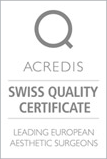Skin surgery
- Ingrown toenail (unguis incarnatus)
- Sebaceous gland (atheroma)
- Lipomas (fat tumors)
- Moles (Nevus)
- Phimosis
Ingrown toenail (unguis incarnatus)
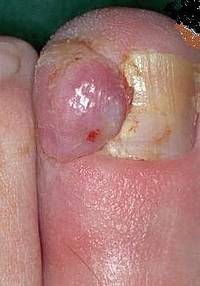
A festering ingrown toenail is caused by ill-fitting footwear, poor nail care or hereditary factors. Conservative treatment attempts such as foot baths, bandages or antibiotics only temporarily mask the discomfort and can at best be used as preparatory measures prior to surgery.
In an ingrown toenail surgery, the affected nail wall is cut out laterally in a wedge shape, under local anesthetic. It is important that the lateral root of the nail is completely removed up to the bone, otherwise a recurrence is likely. The wound is loosely closed with a stitch. Additional measures include changing the dressing the next day, elevating the feet, rest for several days and removal of the stitches after 3-4 days.
Sebaceous gland (atheroma)
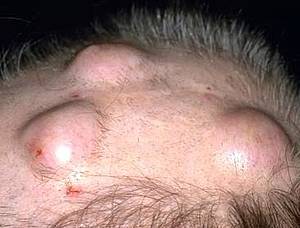
Atheromas appear as a result of an obstruction of discharge in the area of excretory ducts in the sebaceous glands and hair follicle ducts. The contents consist of a greasy white, grout-like paste (“atheroma”). Small atheromas can regress spontaneously, but an atheroma can also become infected and form an abscess. Atheromas can appear within the hair on the head, but also in other places on the head, and are sometimes run in families.
If atheromas are a cosmetic problems, are painful, interfering or are infected, they can be removed under local anesthetic. It is important that the casing is removed as well, otherwise the atheroma regenerates in the same place.
Lipomas (fat tumors)
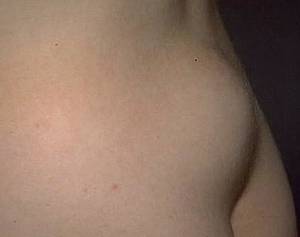
Lipomas are benign connective tissue tumors that can form on any part of the body and which occur very commonly. Lipomas are composed of fat tissue, which is surrounded by a thin capsule. If lipomas are a cosmetic problem or if they hurt, they should be removed. Lipomas up to about 10 cm are best excised through a skin incision under local anesthetic. Several lipomas can be removed in a single session. Individual large lipomas can also be suctioned by means of liposuction with minimal scarring and a short recovery time.
Moles (Nevus)
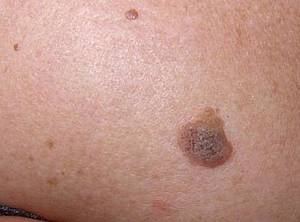
A nevus or mole is a differentiated, pigmented skin formation. Often they are not visible at birth but first appear at a later time. Seen under a microscope, moles range from harmless color spots to malignant skin nodes. The “danger” of a nevus is not always detectable with certainty with the naked eye. Therefore, microscopic analysis is required (histology).
An excision of the nevus is indicated if there is a sudden change in color, size or surface structure or if the mole is a cosmetic or mechanical issue. In healthy people, the mole is excised in a spindle-shape under local anesthetic and is sent to a laboratory for microscopic analysis. Depending on the site, the wound is sutured using either hair thin stitches (e.g. on the face) or thicker stitches (e.g. at larger joints). These stitches must be removed after 8-14 days. In order for the wound to be as invisible as possible later on, the wound should be protected from sunlight and regularly treated with a scar ointment for several months.
Phimosis (narrowing of the foreskin)
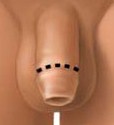
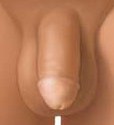
A narrowing of the foreskin (phimosis) occurs when the foreskin cannot be pulled normally over the glans of the penis. This can lead to hygienic and erectile problems. In children under 3, it is rarely a real phimosis, but rather a case of adhesions that protect the sensitive glans. In children over 3, a true phimosis is more likely to be present. Surgery should be considered if there are indications of smegma that is left behind. Indications for surgery in adults depend on the degree of phimosis and complications (repeated inflammation). In older men, there is sometimes a thickening of the foreskin that causes painful lacerations and scarring constriction. Then circumcision is indicated.
Circumcision of the foreskin can take place on an outpatient basis and, with the exception of children between the ages of 8-10, under local anesthesia. The outer foreskin is shortened and stitched to the likewise shortened inner skin flap. You should observe 1-2 days of protection and daily dressing changes, and after a few days the swelling should go down. The stitches dissolve on their own.
Anesthesia
Circumcision should take place under general anesthesia in preschool age children.

